We've all seen Jurassic Park. For this kind of dyno testing however, you may not see as many T-Rex's or Triceratops as you'd hope.
Before your shiny new car hits the streets, it needs to pass a couple tests to meet the standards and requirements for the road.
Commonly abbreviated as “dyno,” a dynamometer is a device that measures power, torque and force.
Jump in below to learn about dyno testing, dyno machines, and how automotive testing engineers can get the most out of their equipment.
What is a Dyno Test?
Dyno testing evaluates the torque and rotational speed of an engine, demonstrating the power generated by your vehicle.
This is a crucial step in automotive testing to ensure the engine is safe and operational before hitting the road.
A dyno measures the revolutions per minute (RPM) to determine its horsepower.
Pressure is gradually increased as the engine’s rpm is regulated along with it. Automotive test engineers collect important engine data on torque, temperature and more.
Engine Dyno Testing
When engine performance needs to be tested, automotive engineers use engine dynos to troubleshoot issues and test build quality.
The engine dyno hooks up directly to the engine, no car body required. The strength and power of the engine being tested determines the type of engine dyno (i.e., a car engine vs a tractor engine).
YOU MIGHT LIKE THIS: [How Vibration Affects Automotive Equipment]
What is a Dynamometer?
The dyno machine is a crucial piece of automotive testing equipment that engineers use to assess power from an engine or motor.
The two most popular types of dynamometers are engine dynos and chassis dynos.
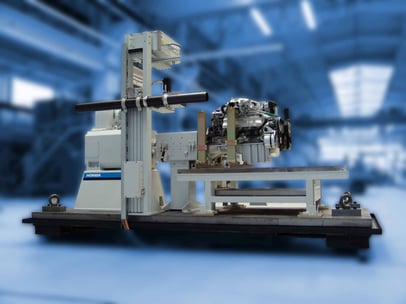
Engine Dyno
Instead of testing how the entire vehicle performs under certain conditions, engine dynos specifically test the power of the engine.
The engine is removed from the vehicle to verify the performance before the engine is installed.
Engine dynos troubleshoot a number of potential issues with engines like overheating and sensor issues.
Mounted directly to the machine, engine dynos utilize water brakes and alternating currents to test different loads against the engine.
Chassis Dyno
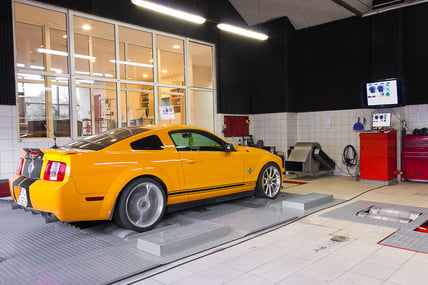
Another commonly used dynamometer in automotive testing is the chassis dyno.
Also referred to as “rolling roads,” dynamometers simulate instantaneous force accurately assess the torque and rotational speed of an engine or motor.
Unlike the engine dyno, the chassis dyno (rolling road) is specially designed to simulate road conditions along with engine power testing.
Rolling roads use fixed roller assemblies to simulate the road conditions we mentioned before. This way, automotive tests happen in a controlled environment before the vehicle hits the market.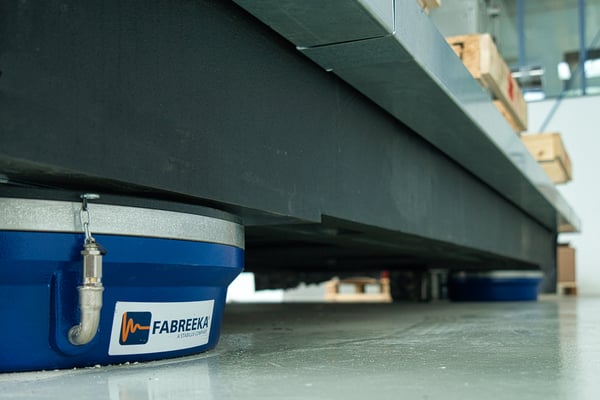
Pneumatic Vibration Isolation System for Dynos
For reliable results, and precision in testing, dynamometers rely on stability to accurately assess an engine’s performance.
In their work environment, dyno machines are susceptible to vibration, whether that be internal or external.
However, you shouldn’t let that shake things up.
With the right technology and solutions, vibration interference to dyno testing becomes a thing of the past.
Fabreeka’s pneumatic vibration isolation system is the ideal vibration reduction solution for dyno testing and automotive testing.
LEARN MORE: [Pneumatic Vibration Isolation Systems for External Vibration]
Precision-Aire Leveling Isolators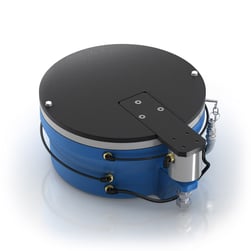
When it comes to shock and vibration, Fabreeka brings over a century of experience for the solutions.
Overtime, our technology and solutions only improve with the flow of progress, as is evident in our Precision-Aire Leveling (or PAL) pneumatic isolators.
The air springs possess vertical natural frequencies from 1.5 to 2.7 Hz, leading to exceptional low-frequency vibration reduction.
Moreover, the isolators automatically level, quickly responding to changes in load or center of gravity.
Fabreeka’s PAL isolators are installed under the bedplate of the dynamometer to separate the device from the surrounding environment, limiting the influence of external vibration.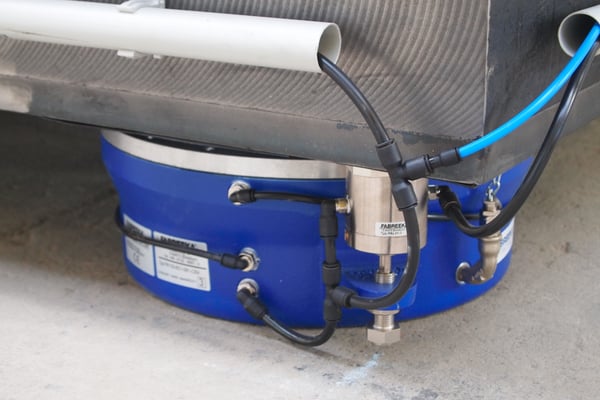
On their own, we can all agree that the PAL isolators boast a lot of cool features.
To get the most out of this high-tech solution, Fabreeka designs custom pneumatic vibration isolation systems utilizing at least three air springs.
The three master isolators allow for full, three-point level control while integrating control valves and load sensors.
Each isolator supports payloads from 120 to 75,000 lbs. per unit. Trust us, these things are built to support even the biggest applications.
READ NEXT: [How Ground Vibration Testing Assists the Aerospace Industry]
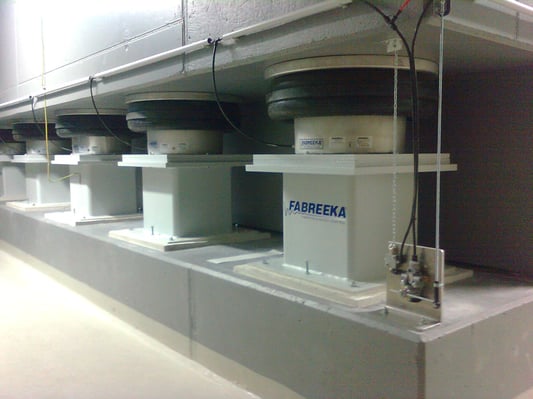
RLA Air Spring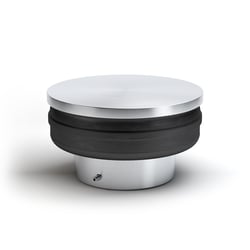
Our Rolling Lobe Air Springs provide superb low frequency vibration isolation for applications requiring dynamic lifting heights and vibration amplitudes.
RLA Isolators are custom-designed for your solution. Operating height and cylinder design vary, meaning our isolators have natural frequencies from 0.6 Hz.
Like the PAL isolators, Fabreeka's rolling lobe air springs support large payloads and are resistant to most oils, cleaning agents, dust, ozone, UV radiation, and general weathering.
Resilient and responsive, RLA isolators are another great component of a low frequency vibration isolation solution.
About Fabreeka International
At Fabreeka, quality is the name of the game.
Our engineers work with you along the way to develop the best vibration isolation solution for you.
We hope this article equipped you with the know-how on dyno testing and the options at your disposal to maximize your testing results.
Contact our team today and hit the road towards a high-tech, high-quality vibration isolation system that keeps your business moving without a hitch.
Subscribe to our blog today to stay up to date on industry trends, Fabreeka news, and so much more!
Oh yeah, did we mention the updates go right into your inbox?





SUBMIT YOUR COMMENT